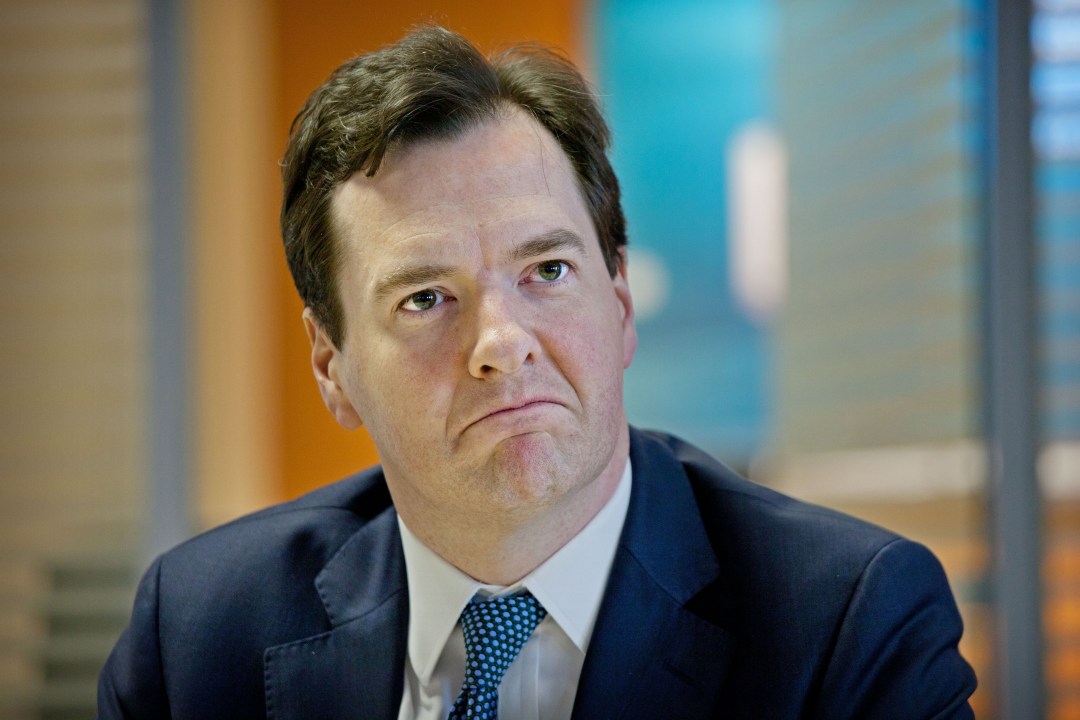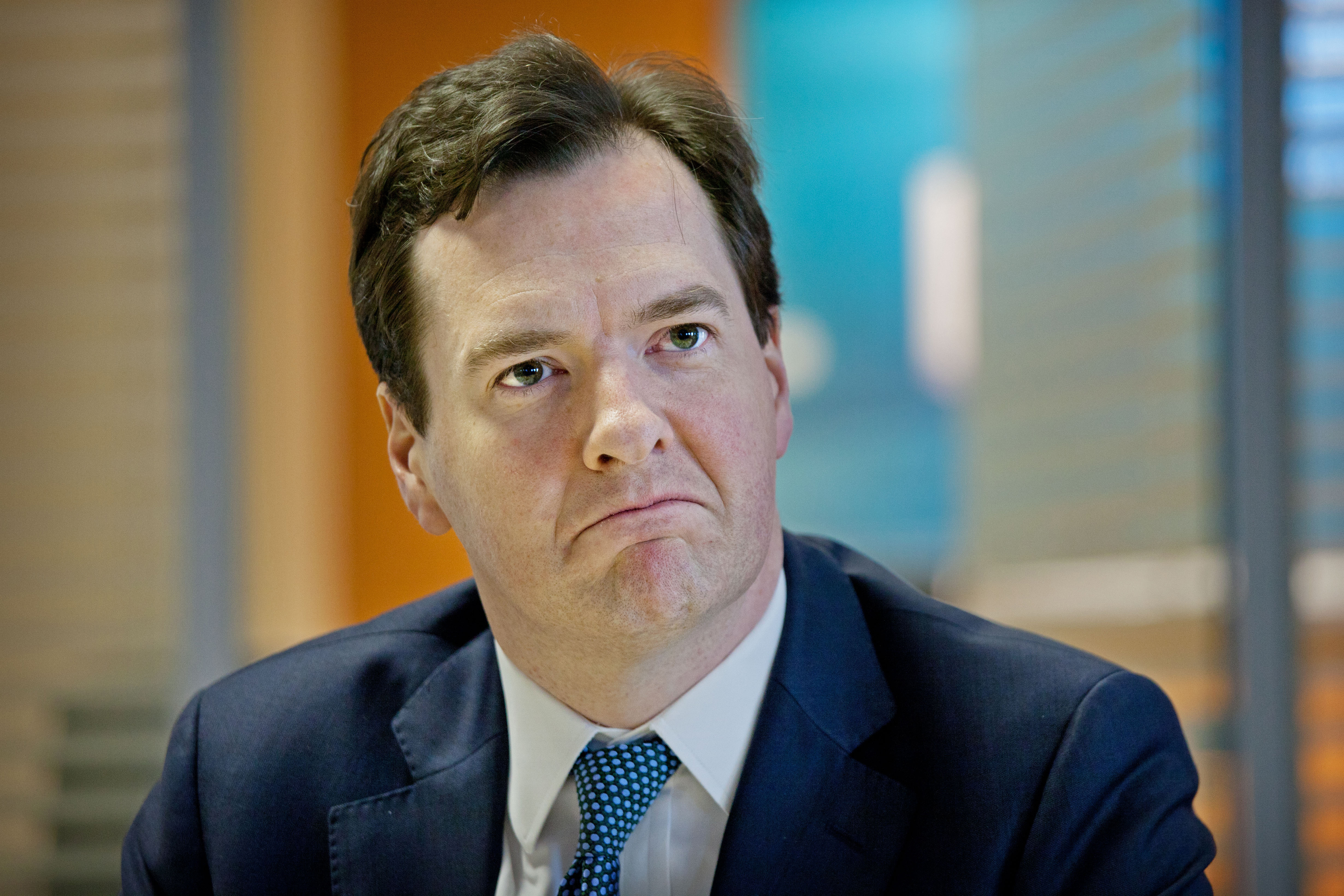George Osborne’s two fiscal rules have been around since his very first Budget, delivered almost two years ago, so they’re hardly news. But they do underpin much of what he’s done since, including last week’s statement, so they’re also worth knowing about. Fraser touched on ome of the detail in a post last weekend, but here’s a supplementary guide for CoffeeHousers:
1) The deficit rule. This is the one that seems to cause the most confusion, perhaps because it has often been simplified — wrongly — as something like ‘eliminate the deficit by the end of this Parliament’. Fact is, the ‘end of this Parliament’ doesn’t come into it. And as for ‘eliminating the deficit’, it depends on what ‘deficit’ you’re talking about.
The actual rule, as the Office for Budget Responsibility describes it, is to:
‘Balance the cyclically-adjusted current budget (CACB) by the end of a rolling, five-year period.’
So what does it mean? The first thing to note is that the CACB is what Osborne calls the ‘structural deficit’. This is different from what we normally call the deficit, or
‘public sector net borrowing’, in that — in theory — it doesn’t depend upon the state of the economy. It’s the money that the government would have had to borrow whether the country is booming or busting or whatever. This, however, is a tricky figure to come up with, as it involves various medium-term assumptions about growth, tax receipts and government spending. The end result is, almost by definition, imprecise.
The second thing to note is that Osborne isn’t planning to balance the structural deficit by the end of this Parliament, or by 2015 — but ‘by the end of a rolling, five-year period’. This rolling period starts afresh practically every time he stands up to deliver a Budget statement. When he presented his first Budget, in June 2010, this five year period ended in 2015-16. Now it ends in 2016-17. This explains why the Chancellor been able to meet his rule every year despite deficit forecasts increasing in the meantime. Here’s the graph showing the CACB forecasts from his first Budget and his latest; notice how he’s getting rid of the structural deficit two years later than orignally planned, but still within the bounds of his rule:

This does make the rule a little bit peculiar. So long as Osborne plans to eliminate the structural deficit within five years of any given Budget, then he’ll still be on target. He could be standing up in 2020, promising that the ten-year old structural deficit will be gone by 2025, and it would all be fine by his own criteria. The government would say that the rule does at least demonstrate a commitment to deficit reduction — but, still, like I say, it’s a little bit peculiar.
One final point, before we move on to the next rule: part of the confusion over this first rule is, I suspect, caused by the debate that rumbled on before the election. Back then, everyone was
talking about the ‘deficit’ plain and simple — aka, public sector net borrowing. Labour pledged to halve this over the next Parliament. The Tories pledged to go further than
Labour would. But then, once the coalition was born, Osborne started talking about the ‘structural deficit’ instead. Even now, Labour get it wrong, comparing their plan to halve the deficit to Osborne’s plan to eliminate the structural deficit. But the truth is there to see in Labour’s manifesto, which pledged that, ‘Over the next Parliament the structural deficit will be cut by more than two-thirds.’
2) The debt rule. This one is much more straightforward, not least because it doesn’t involve rolling forecast horizons and tricky definitions. It is to:
‘Ensure that debt is falling as a share of GDP by 2015-16.’
But beneath this simplicity are some stark economic facts. It cannot be a coincidence that this fiscal rule matches the conditions attached to our AAA rating by the credit rating
agencies. Indeed, when Alistair Darling delivered his last Budget, Standard & Poor’s warned that, ‘Additional spending measures will likely be required to put the public debt burden on a
clear downward trajectory later in the current decade.’ It’s likely that Osborne took his cue from there.
Going by the official figures, Osborne is meeting this second rule. Look to the slight dip on the end of this graph:

But, as I wrote in the Times (£) last year, the economics of this are precarious. The graph above is
predicated on the OBR’s growth forecasts, which many regard as optimistic. Citi are just one of those forecasting agencies expecting ‘a more extended rise in the debt/GDP ratio’ than
the Treasury is accounting for. No wonder the credit rating agencies are getting twitchy.







Comments